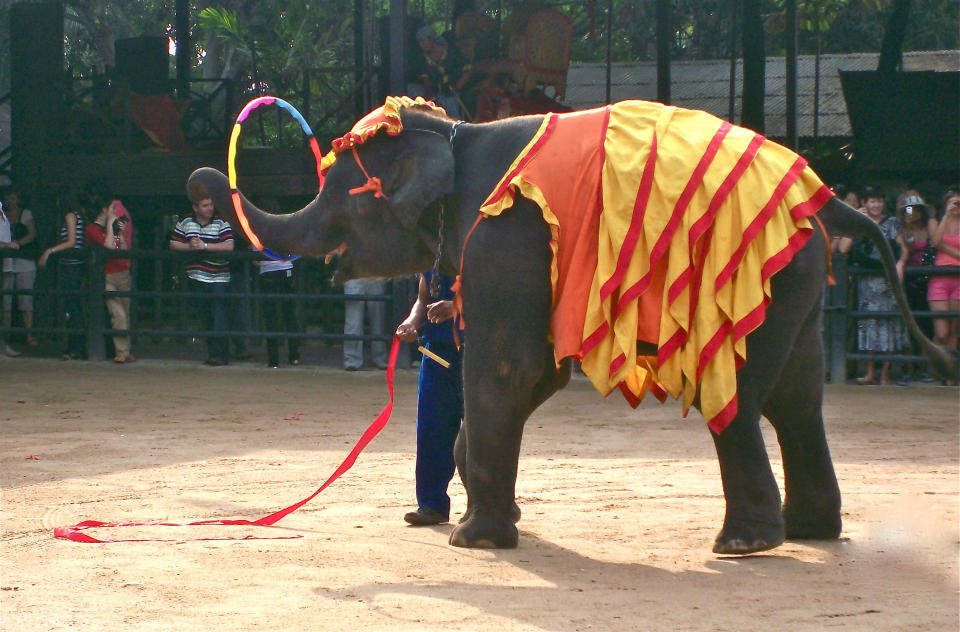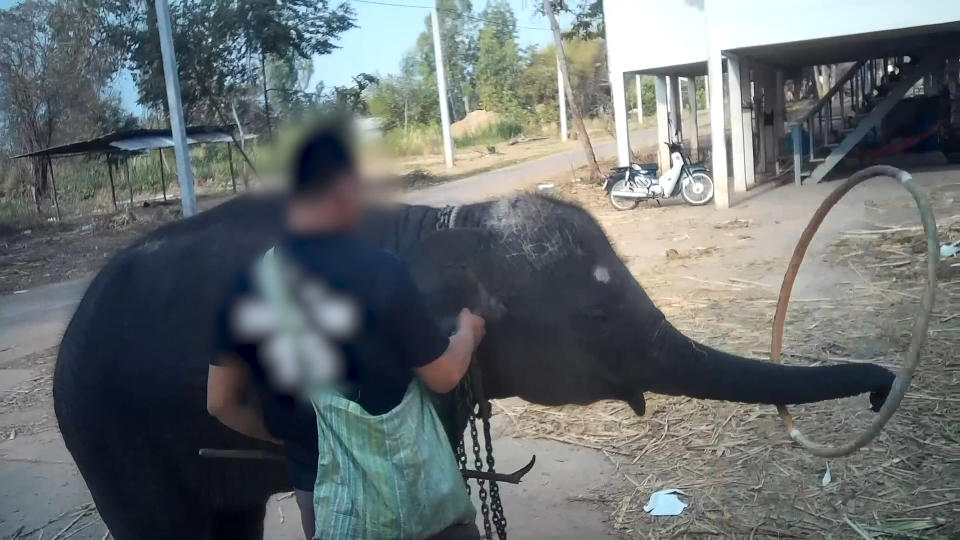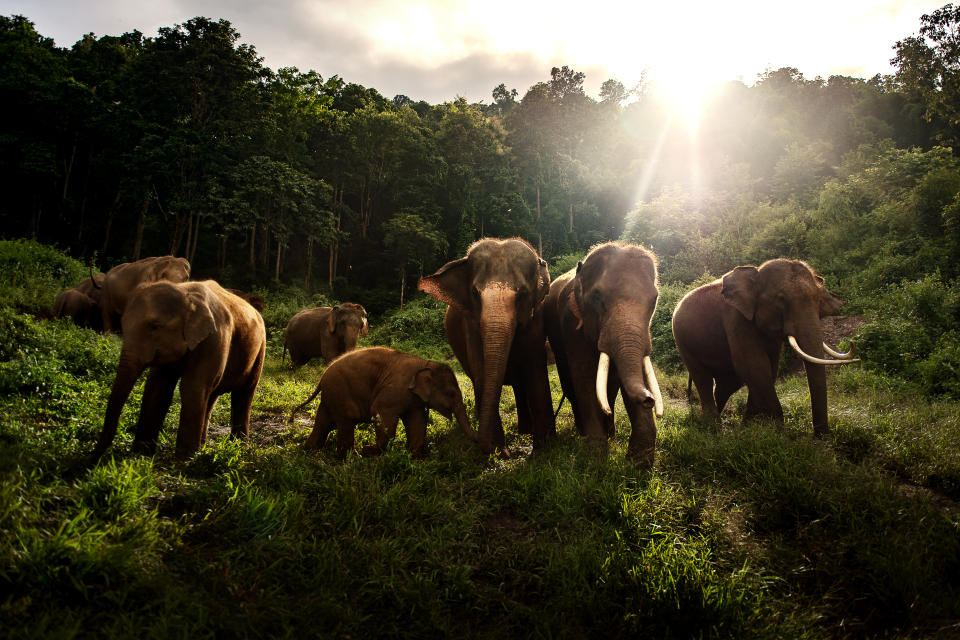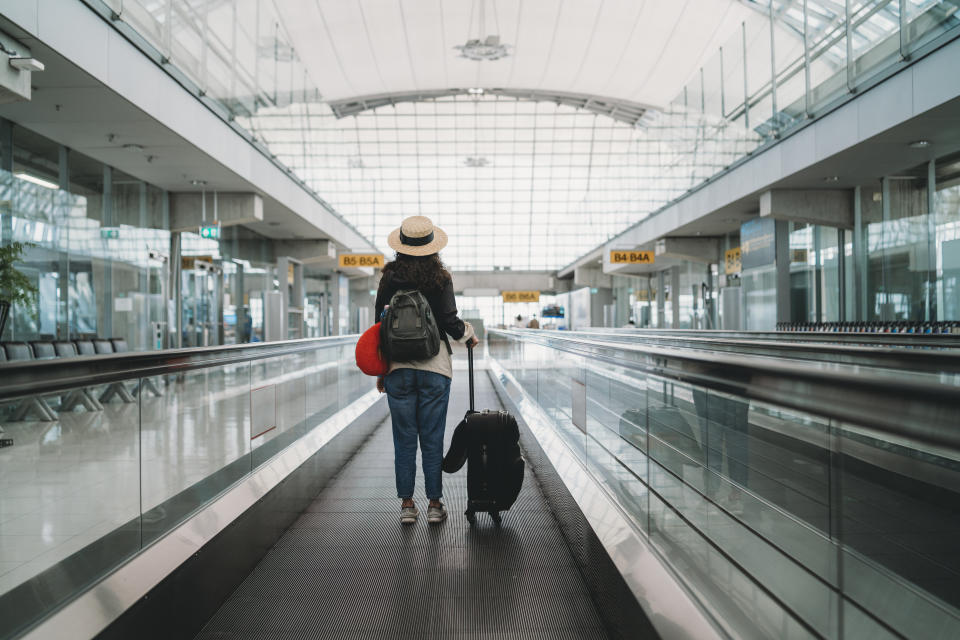Tourists warned after new video exposes cruel elephant training methods
WARNING - DISTRESSING CONTENT: Heartbreaking footage of baby elephants being trained to entertain travellers has been shared in a bid to lift the veil on wildlife tourism.
In never before seen video, the four stages of “the crush” have been captured by an investigator, showing baby elephants separated from their mothers before being taught to give rides and pose for photographs.
Footage shot by an investigator, working with animal rights group World Animal Protection (WAP), shows how eight baby elephants were prepared for the tourism industry by three of Thailand’s most prolific trainers, known as mahouts.

During the coronavirus pandemic, Thailand’s tourism industry came to a standstill and as many as 1,000 elephants left busy cities and returned to remote villages.
By releasing the footage, investigators hope that the elephant sector can rebuild with an animal welfare focus.
First stages of ‘crushing’ an elephant
Stage one of training has calves aged approximately two-years-old led away from their mothers, forcing them into independence six years earlier than is expected in the wild.
To keep the calf calm as it is led out of its mother's sight, it is tethered to another adult elephant.
One elephant, called OonBoon can be seen pacing and crying after the separation.
In the second stage, known as submission, the animals learn that not complying with commands leads to punishment.
During this part of the training, the animals are tethered to the “crush”, a kind of wooden box that restrains them.

The young elephant, called OonBoon can be seen resisting against the heavy chains and ropes that tether him to trees and poles.
While restrained, sharp hooks, nails and sticks are used to inflict pain during two training sessions a day, after which the wounds are washed to avoid infection.
According to WAP veterinary advisor Dr Jan Schmidt-Burbach this leaves the baby elephants emotionally scarred throughout their lives.

“(The hooks) can definitely hurt, I mean these hooks are designed so (the trainers) can regain control in the most difficult situations,” he told Yahoo News Australia via video link from Germany.
“They try to train the elephants at a very young age when they’re even more sensitive to pain to understand that the hook means pain.
“And if they really understood this, then later on when the elephant has grown up, it’s already connected that in its brain and thinks oh god the hook is going to be painful so I better obey.”

Elephants entertaining tourists with hula hoops
Once they are compliant, stage three begins, and the elephants are given rewards such as sweets for performing to basic commands.
As many of them will earn their keep in busy tourist areas, the Mahouts lead them through heavy traffic areas, desensitising them to dogs, cars and people.
Finally, the elephants will learn complex tricks to ready them for the tourists, learning to spin hoops, paint pictures and give rides.
Footage provided by WAP shows trainers manipulating a calf’s trunk to make it paint on a canvas, while another is prodded with a hook as it spins a hoop around its trunk.

Trainers’ reputations grow internationally
As their reputations spread, the men are increasingly being flown overseas to share their knowledge, according to Dr Schmidt-Burbach.
“The trainers we found, because they are so famous and well-known they go to South Korea, they go to China to train elephants over there,” he said.
“This again is a worry.”
Dr Schmidt-Burbach said they chose to focus on three particular training teams because they trained the most elephants in Thailand.

The investigator documented the training of eight young calves along with an adult bull who was re-trained after seriously injuring the wife of his owner.
“These trainers, from what we know, train 30 to 40 elephant calves a year, which is the majority of elephant calves being born in Thailand,” Dr Schmidt-Burbach said.
“So, we’re fairly confident to say this is the way most elephants are being trained.
“And from talking to the trainers, other trainers train their elephants in similar ways – there might be slight variations in the tools they use – but it’s all based on separating the calf, establishing dominance and getting the elephant calf to understand that not obeying is pain.”
‘The last generation’: Hope for the future
Elephants are only subjected to such training demands to meet the needs of tourists, according to WAP Thailand country director Roatchana Sungthong.
Elephants have been responsible for human deaths, and Ms Sungthong says it is only by breaking the animal’s will that mahouts can reduce the danger.
With elephants being a large, dangerous wild animal, Ms Sungthong believes that Mahouts have tourist safety in mind when they train the elephants using brutal methods.

'Bit of an unknown': Dog meat farm shutdown stalled by coronavirus restrictions
Tragic story behind circles of bones photographed in city street
The battle to save Australia's dying koalas continues amid coronavirus crisis
How Chinese farmers could prevent the next pandemic, experts reveal
Dangerous coronavirus myth leads to unexpected dog meat demand
“We really want this to be the last generation (of elephants) of having been through this,” she told Yahoo News Australia .
“We want (the) public to be aware of how elephants are being trained (and) all the cruel techniques that are being used, and how they suffer for them to be able to serve us for example in the tourism industry.”
“Because there’s the demand from the tourists, that’s why the incidents have happened in Thailand,” she said.
Thais upset to see national symbol in chains
For many locals, seeing elephants in chains and submitting to foreign tourists is an emotional experience as they are the national symbol of Thailand.
Their presence in the wild is being diminished due to poaching and logging, and more than 3,000 are thought to now be working in tourism.
Despite many well-known tourism brands such as Tripadvisor turning away from animal experiences, WAP say that prior to the coronavirus pandemic, exploitative elephant experiences were on the rise in Thailand.
Ms Sungthong said she does not blame the mahouts for the training conditions, arguing they are merely performing a job to meet the demand of tourists.

“I strongly believe that when people see this, they would know that it is not something that we should keep quiet, it is not something we should ignore” she said.
“And because elephant is such an intelligent animal, for them… for us… because of the demand of the tourism industry, it’s putting them through that cruelty.
“They have to be like that for the rest of their lives.”
Do you have a story tip? Email: newsroomau@yahoonews.com.
You can also follow us on Facebook, Instagram and Twitter and download the Yahoo News app from the App Store or Google Play.

